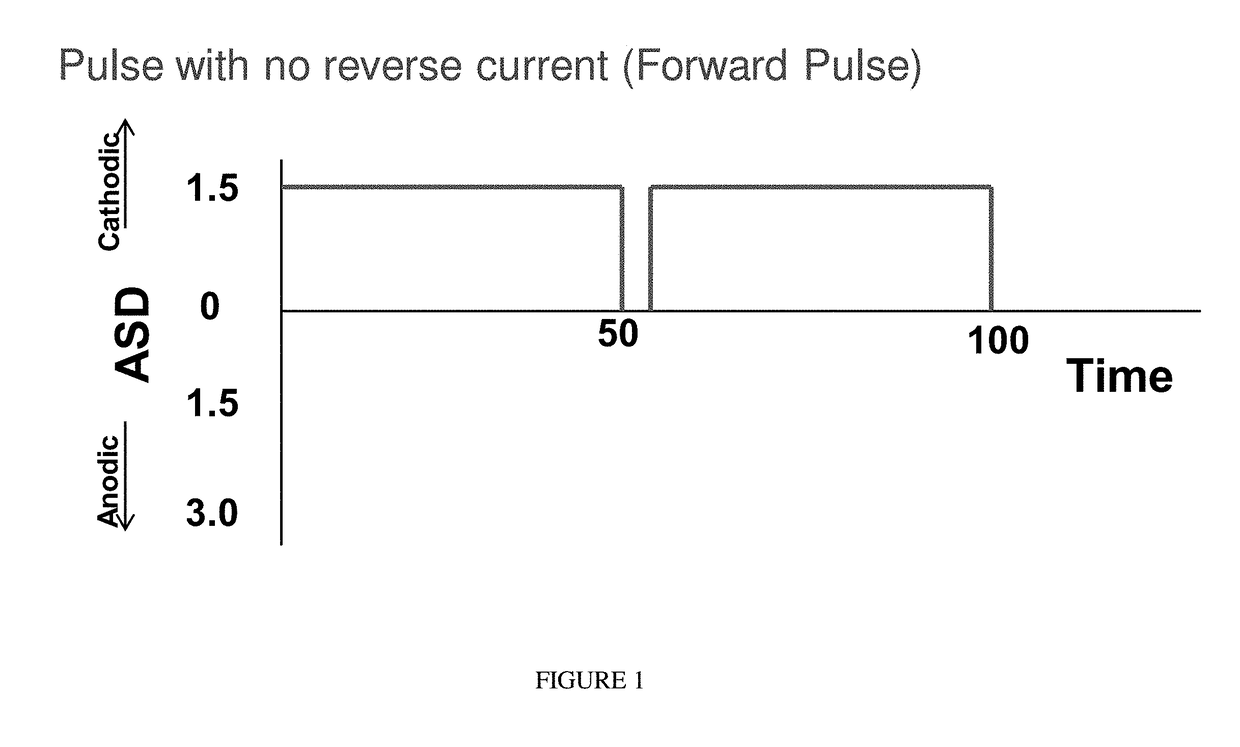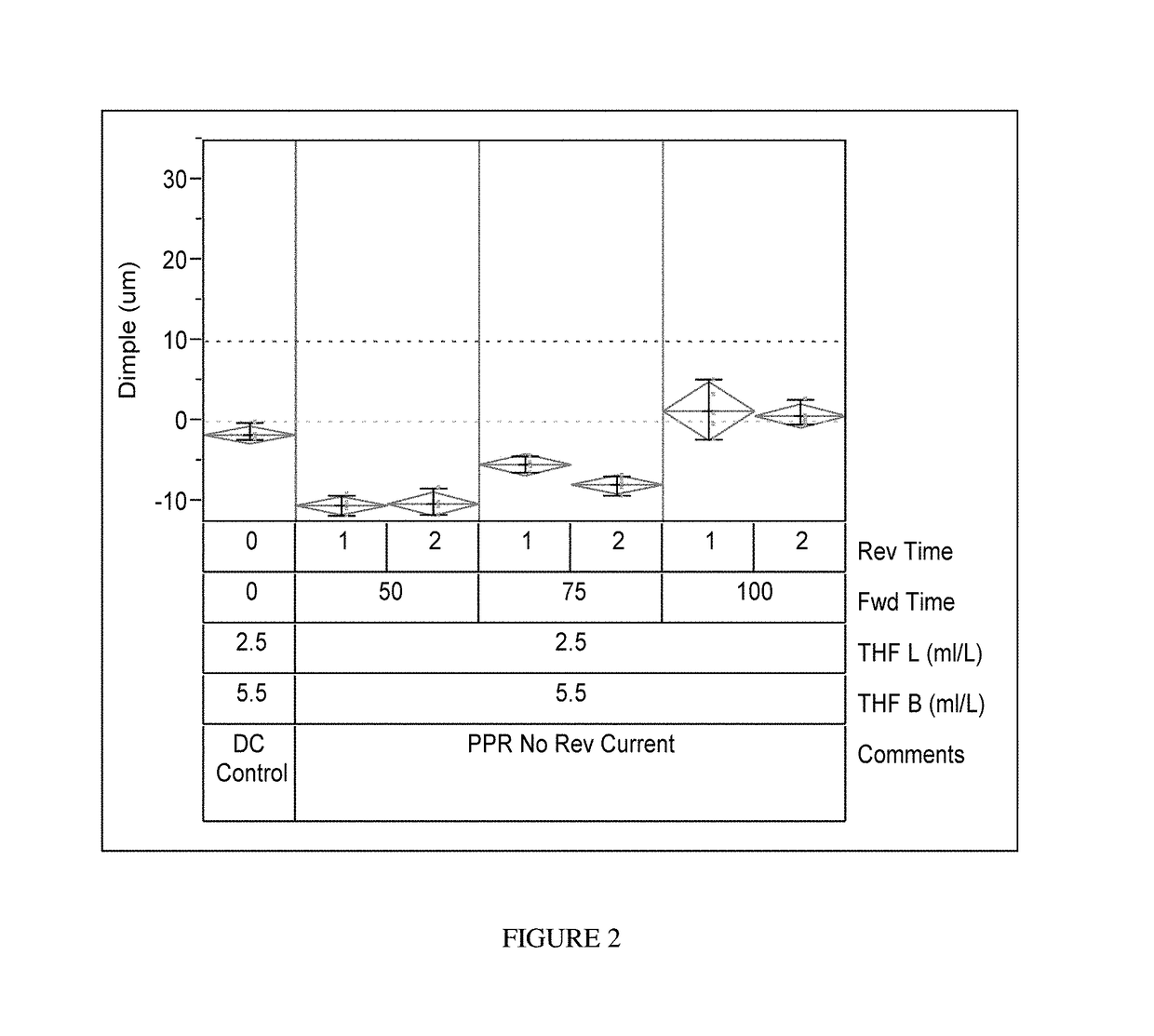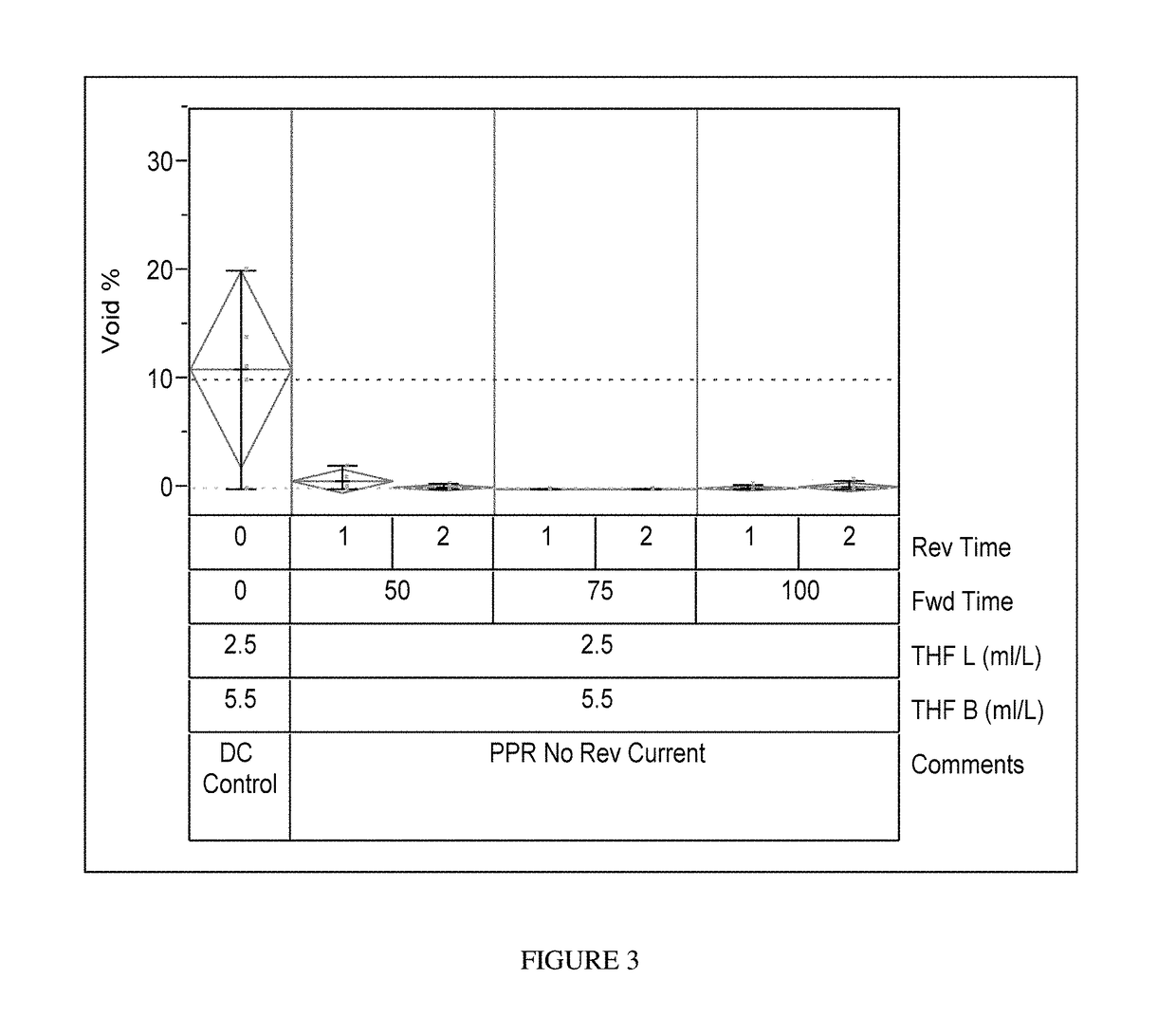Filling through-holes
a technology of through-holes and copper plating, which is applied in the direction of liquid/solution decomposition chemical coating, printed element electric connection formation, coating, etc., can solve the problems of copper plating's increased difficulty in filling through-holes, and increased difficulty in forming through-holes. , to achieve the effect of improving throwing power, reducing or inhibiting dimple formation and voids
- Summary
- Abstract
- Description
- Claims
- Application Information
AI Technical Summary
Benefits of technology
Problems solved by technology
Method used
Image
Examples
example 2
[0038]Six FR4 / glass-epoxy coupons 5 cm wide, 15 cm long and 200 μm thick with a plurality of through-holes were provided by Tech Circuit. The through-holes had an average diameter of 100 μm. The coupons were plated with CIRCUPOSIT™ 880 Electroless Process plating formulation and method (available from Dow Electronic Materials, Marlborough, Mass.) to form a copper layer on one side of the coupon and on the walls of the through-holes. The thickness of the copper layer on each coupon was 0.3 μm. The coupons were pre-cleaned using a conventional copper cleaner. The coupons were then placed in Haring cells which contained a copper electroplating bath with a formula as shown in Table 1 above.
[0039]The coupons were connected to a conventional DC rectifier. The counter electrodes in the Haring cells were insoluble anodes. The plating baths were air agitated during electroplating at 2.4 L / minute. Plating was done at room temperature. The current density was set at 1.5 ASD. Two of the coupons...
example 3
[0041]The method described in Example 2 was repeated using four FR4 / glass-epoxy coupons 5 cm wide, 15 cm long and 200 μm thick with through-holes having an average diameter of 100 μm. The forward pulse time was either 20 ms or 35 ms and the interruption times were either 1 ms or 2 ms. There was no reverse current. The coupons were sectioned and analyzed for dimple size and percent void area as described in Example 2 above. The coupons which were plated at a forward current density for 20 ms with 1 ms current interruptions had an average dimple size of 4.3 μm and the coupons with current interruptions of 2 ms had an average dimple size of 5.4 μm. The coupons which were plated with a forward current density for 35 ms with 1 ms interruptions had an average dimple size of −2.78 and the coupons with the 2 ms interruptions had an average dimple size of 6.67. All of the through-holes analyzed all fell below 10 μm. None of the coupons analyzed showed voids. Also, no nodules were observed.
PUM
| Property | Measurement | Unit |
|---|---|---|
| thick | aaaaa | aaaaa |
| thick | aaaaa | aaaaa |
| diameters | aaaaa | aaaaa |
Abstract
Description
Claims
Application Information
 Login to view more
Login to view more - R&D Engineer
- R&D Manager
- IP Professional
- Industry Leading Data Capabilities
- Powerful AI technology
- Patent DNA Extraction
Browse by: Latest US Patents, China's latest patents, Technical Efficacy Thesaurus, Application Domain, Technology Topic.
© 2024 PatSnap. All rights reserved.Legal|Privacy policy|Modern Slavery Act Transparency Statement|Sitemap



